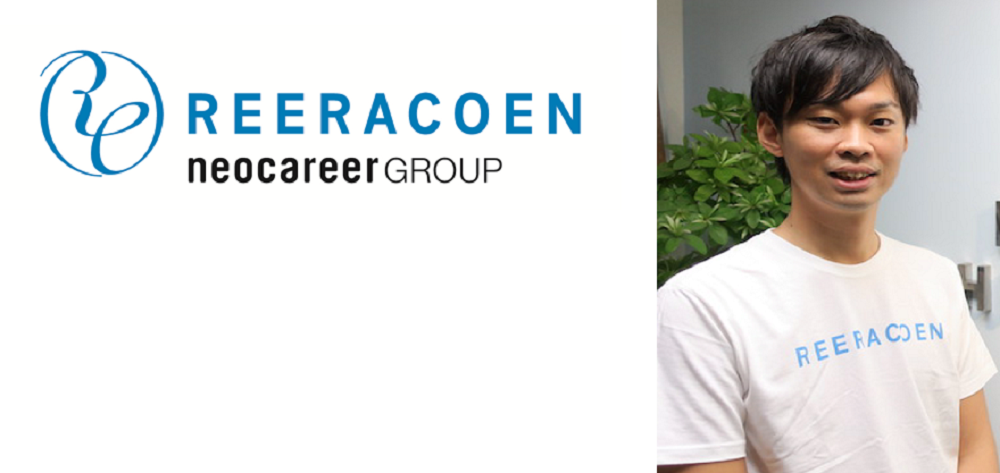Low retention rates and fees are a characteristic of India
With a population of over 1.3 billion and the world’s fifth largest GDP (data from 2016), India has a large presence in Asia. With overwhelming market size and opportunity,
the economy in India is still growing steadily.
――What areas is Reeracoen India as a recruitment agency focusing on in developing its business?
We operate mainly in three areas. The first is to support local Japanese companies with local mid-career recruitment. Our clients are in a wide area such as trading companies, consulting companies, logistics, and manufacturers. The second is introducing Japanese talent who want to work in India to Japanese companies operating locally. In the area such as suppliers of industrial parks. The third is employment support for Indians, including IT engineers, who are searching for work in Japan.
Large proportion of our clients are Japanese companies, at about 80% of the total number. About 10% are foreign-affiliated companies and another 10% are local companies.
――What is difference between India and Japan recruitment business?
India has a lower retention rate as compared to other countries in Southeast Asia. It is common to leave a position within a year. This is an advantage for us, but the recruitment fee is lower because of that. Recruitment fee in Japan is between 30 to 40%, but in India it is common to be set at 8.33%, which is equivalent to a month’s salary. Because India is a country with history and the market price has been set, India has a culture of capturing things based on original standards and this is not only in the recruitment consultant agencies. It can be said that it is a tough market when you look at the numbers alone.
――How do you search for talent?
We search for talent mainly online, using job searching sites such as Naukri (https://www.naukri.com/). We also use medium and small sized portal sites such as Monster (http://www.monsterindia.com/) and Shine (https://www.shine.com/). In many cases the executives tend to share information on LinkedIn and most of the IT talent are based on referral. Naukri is the most popular site in India, and the number of portal sites are limited, but I think there will be sites specializing in expertise from now on.
――What area is your company focused on?
There are about 1300 Japanese companies operating in India, 500-600 in Gurugram and Delhi, 200 each in Chennai and Bangalore, 150 in Mumbai. Most of the Japanese companies operating in India are associated with Maruti Suzuki India (affiliated with Suzuki motors). Their production factories are mainly in the northern area of the country and the suppliers and trading companies linked to them have also advanced. Lately there have been many Japanese companies entering Ahmedabad District of Gujarat, the hometown of prime minister Modi. There are about fifty Japanese companies operating in the area now, when there were none until several years ago, the prime minister is also eager to activate the area while he is in office.
Improve speed and yield rate by utilizing HRBC
――We understand that you started using HRBC in March 2017. What led you to this decision and what functions you often use?
Originally, we had only one employee and that increased to 15 as the base expanded, and this was the timing that we decided to introduce the system. The function we use most frequently is the dashboard. By looking at items such as Application, Selection and Resume, we can be conscious of the speed and yield rate of closing cases effectively in a short timeframe of a month.
Our company has KPI rules that consultants have to observe, such as getting results within three days if it is the selection process, setting interviews within a week from application and sending in applications on the same day. By looking at the dashboard, we can see the situation of an ongoing case at a glance, and I can follow-up on progress of outstanding cases. HRBC is also useful for the management of consultants.
――Can you be more specific?
Some consultants proceed forward without commands. Therefore, if you try to manage them with the macromanagement method, sometimes they may go in a direction different from what we want. HRBC is useful because it needs to be managed in detail using the micromanagement method.
――Are there any other features that you think are useful?
I like the function that the messaging form launches with one click when you find an applicant that you want to be in contact with. Also, there are plenty of messaging templates, and we use it for simultaneous transmission.
The goal is to expand our base and support success after joining the company
――Do you have any requests for the future?
Since I have not been able to utilize the Report and Export functions, it will be nice if we can receive guidance online using videos. It will be useful if the Memo field can be separated between Career Agent(CA) and Recruitment Agent(RA). At our company, the CA would use the Memo field to enter comments such as “Why would you recommend this candidate?”. Sometimes when the selection process is on stall, the RA would enter comments in the same Memo field and the two can get mixed up easily. It can cause confusion, so it will be great if you could update the system.
――Thank you very much. Finally, please tell us your prospects.
India is a country with a large land area and the market is large too. Since our company has gradually gained awareness in the northern area, I would like to expand our base to areas such as Chennai and Ahmedabad. Since India is a treasury of IT talent, I would like to introduce such talent with a cross-border mentality to Japan and other countries where engineers are shorthanded.
In terms of recruitment, there are culture gap between Japan and India. Even if you introduce talent, they sometimes quit after a short term and there are many Japanese companies that feel an issue on this matter. Therefore, for the Indian talent to be active in Japanese companies for a long time, we are making online content for educational training purposes. The manners at interviews are completely different, so we will guide them in such area. If the retention rate rises, the satisfaction level of the hiring company will also increase.
■Reasons for Choosing HRBC
①In order to manage efficient operations and progress as the business scale expands
②To improve speed and yield rate
③To practice micromanagement based on data
 Reeracoen India Pvt., Ltd.
Reeracoen India Pvt., Ltd.
Reeracoen India is a local subsidiary of Japan’s major recruitment agency NEO CAREER CO., LTD. Utilizing their know-how of developing human resources services since 2000, they entered the Asian market in 2011. In just seven years, they have expanded to ten countries and 22 business bases mainly in Asia.















